In this candid conversation, Deepak Harichandan—one of India’s leading newspaper design editors and currently the Chief Design Editor at Deccan Herald—joins T.K. Sajeev, Editorial Director of newspaperdesign.org , to reflect on key moments from his 25-year journey in visual journalism. From the urgency of breaking news to the meticulous process of redesigning legacy newspapers, he highlights the vital—yet often overlooked—role of design in shaping how we experience major news events. Over the years, Deepak has held senior positions at The Times of India, Hindustan Times, The Hindu and The New Indian Express, and has worked closely with top 20 finest editors of the industry
How did your journey into newspaper design begin?
My journey into newspaper design began quite unexpectedly after I graduated with a fine arts degree. I landed my first job in Delhi as an illustrator at the Children’s Book Trust, a publishing house located on Bahadur Shah Zafar Marg — Delhi’s equivalent of London’s Fleet Street. The area was home to many of India’s leading newspapers, including The Indian Express, Financial Express, Business Standard, The Times of India, Navbharat Times, National Herald, and The Pioneer — all except Hindustan Times, which was based in Connaught Place. That location would turn out to be more important to my career than I initially realized.
Working a typical nine-to-five job, I often spent my lunch breaks watching the journalists from nearby offices. They seemed confident, stylish and free — unlike me, bound by strict routines. While I followed fixed schedules and early mornings, they appeared to move through their day with independence and flair. Watching them every day sparked my ambition — I wanted to be part of their world.
My chance came after I had illustrated around 40–45 children’s books, the design department led by Mr. Subir Roy, Design head, who was my first boss In 1995. It was a eye opener for me to get introduced to the new world of children illustrations. When T.N. Ninan , Executive Editor of Businessworld and Business Standard, hired me on Anup Gupta’s referral, I knew I was stepping into something significant. Working under Ninan’s editorial leadership introduced me to the rigorous standards of business journalism.
What truly shaped my experience was working alongside Anup Gupta as Design Editor, who is a true professional. Anup’s approach to design went beyond aesthetics – he understood how visual storytelling could enhance business journalism’s impact.
In 2000, the first break came from Sharat Sharma, Editor-at – Large for the Response department, Times of India who offered me a role managing a specialized B2B educational weekly, The “Education Times”. It targeted Indian students dreaming of international education. Led by Jayanti Chandrasekharan, the publication acted as a bridge between Indian students seeking engineering, technical and professional courses abroad and foreign consulates hoping to attract them to their universities.
This wasn’t just another design job — it was a platform where countries competed for India’s brightest students. As the sole designer supporting an editorial team of 10–15, I had to turn complex educational content into visually engaging layouts that caught the attention of busy students and their parents. The work demanded both creativity and an understanding of how design could influence major life decisions.
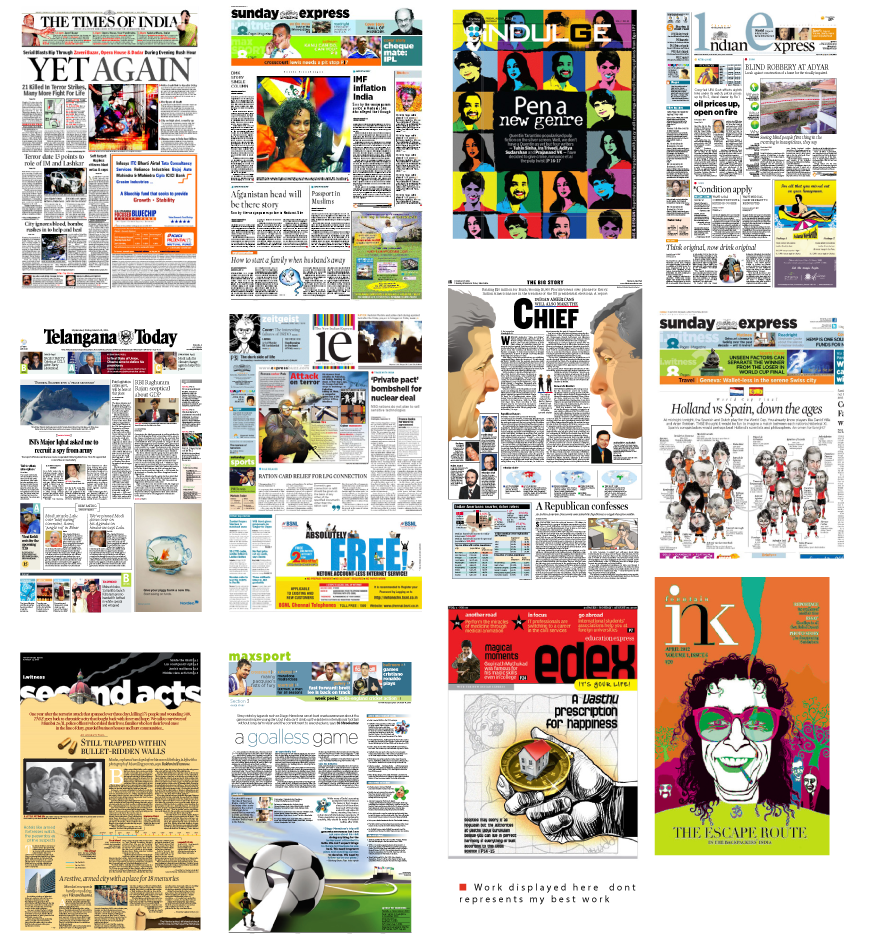
Bipul Guha, Design Editor at The Times of India, who had deep expertise in typography, brought me into the main edition and gave me larger projects. That was a turning point. My work began gaining attention from senior editors, including Shekhar Bhatia, Executive Editor. I was soon promoted from working on supplements to the main newspaper. I had the privilege of working alongside a fantastic team, including the late Ajit Ninan (cartoonist), Neelabh Banerjee, and Pranab Saha. During that time, I also got to meet and collaborate with many brilliant editorial minds — Jug Suraiya, Siddharth Varadarajan, Sabina Sehgal (Editor of Delhi Times, who was tragically killed in the 2008 Mumbai attacks), Nikhat Kazmi, and Kaveri Bamzai, Editor of the TOI Sunday Edition.
This steady progression led me to larger roles within The Times of India. I initially contributed illustrations, and then moved up to become Assistant Manager of Design. I worked with a talented team of 25–30 designers on special features, long-form stories, and major news events — always aligning with the newspaper’s editorial vision.
That’s how my career in newspaper design began — from an illustrator inspired by the journalists around me to a key part of the design team at one of India’s leading newspapers.
How did you revolutionize newspaper design in India?
My journey really took off at The Times of India between 2000 and 2003, but the major transformation happened when several senior editorial figures, including the Executive Editor Shekhar Bhatia moved to Hindustan Times. It was an incredible experience working under some brilliant editors. The Editor-in-Chief was Vir Sanghvi and I had the opportunity to collaborate with dynamic editors like V. Krishna (Editor, Special Projects), Aditya Sinha (Editor, Sunday HT), Avirook Sen (Editor, Sunday HT), Yashwant Raj (Page One Editor) Poonam Saxena (Editor, Brunch Magazine),Pramit Pal Chudhury ( World Editor) Ashutosh Sapru (Design Editor) and Indrajit Hazra (Columnist).
HT had just been redesigned by Michael Keegan from The Washington Post.
Working with Keegan’s templates was eye-opening. At TOI, design was more instinctive and often cluttered. At HT, I learned about design hierarchy, the power of white space, clean typography and consistent color systems. The result was a newspaper that looked more elegant and easier to read. We weren’t just making the paper prettier—we were improving communication. HT eventually overtook TOI in popularity, thanks to a strong mix of quality journalism and world-class visual design.
At HT, I started as Chief Designer, then was promoted to Graphic Editor and within a year, became Associate Design Editor.
Then came the big challenge: HT‘s launch in Mumbai—a city dominated by Times of India and Mid-Day. I was part of the launch team, led by Vir Sanghvi and the high-energy Mumbai editor, Avirook Sen. We studied Mumbai’s diverse communities-Gujarat’s, Parsis, various Muslim groups – and created customized supplements and lifestyle content tailored for this aspirational city of finance, fashion and film.
But the real innovation came when Jaideep Bose (known as Jojo), who had joined TOI as Executive Editor, invited me to a meeting at Sameer Jain’s residence in Delhi. He said, “Deepak, you’re doing great work at HT, but we need you back. Come and lead our design team in Mumbai.” By then, HT and the new DNA newspaper were serious competitors to TOI, and they needed to rebuild their presence in Mumbai.
I accepted the challenge and returned to TOI as Head of Design for the Mumbai edition. I built a team of 30–35 designers.
Under Jojo’s leadership, we formed a strong editorial team that included Derrik D’Souza, Bachi Karkaria, Dina Vakil, Manu Joseph (Editor, Sunday Feature Magazine) , Indrajit Gupta ( Business Editor) and other vertical heads . This is where we introduced what became known as the “great packaging” system.
Traditional newspapers treated each story in isolation. We asked: What if we told the full story in one place? For example, during the Mumbai floods, instead of just one article, we created a comprehensive package: the main flood report, infrastructure failure, BMC response, pothole safety, transport chaos, historical rainfall trends—10 to 12 interconnected stories on one visually unified page.
This wasn’t just better journalism—it was a design revolution. We created modular layouts that could handle multi-layered stories, giving readers a complete picture in one glance, instead of making them flip through pages. It required a new approach to information architecture, visual hierarchy and layout flexibility.
Every day at 12:30 p.m., we strategized how to package the day’s big stories. It was intense- leading large teams, beating tight deadlines and staying ahead of the competition- but the results were phenomenal.
TOI’s Mumbai edition grew to over 100 pages, with 40-45 pages dedicated to city coverage alone. We weren’t just reporting Mumbai’s stories-we were defining the city’s narrative through hyper local, immersive storytelling.
The impact was immediate and long-lasting. Other newspapers, including TOI’s own Delhi edition, adopted our packaging model. It became the new industry standard.
What made this truly revolutionary wasn’t just the visual design- it was the belief that design is about communication and communication is about community. We showed that smart, thoughtful design could reshape an entire industry. The packaging system we created in Mumbai laid the foundation for modern newspaper design in India.
What is your design philosophy as a design editor?
My design philosophy is built on one core principle: discipline.
Newspaper design isn’t the same as graphic design. It’s not about decoration or just making things look pretty, like in advertising or branding. News design must have weight and credibility. It supports journalism—it’s not about distracting from it.
I believe in a constant process of learning and unlearning. When I joined Hindustan Times, under the mentorship of Michael Keegan, my understanding of design deepened. He taught us that design must answer essential editorial questions: what happened, when, where, how, who and why. These are the fundamentals. Design must support storytelling, not overshadow it.
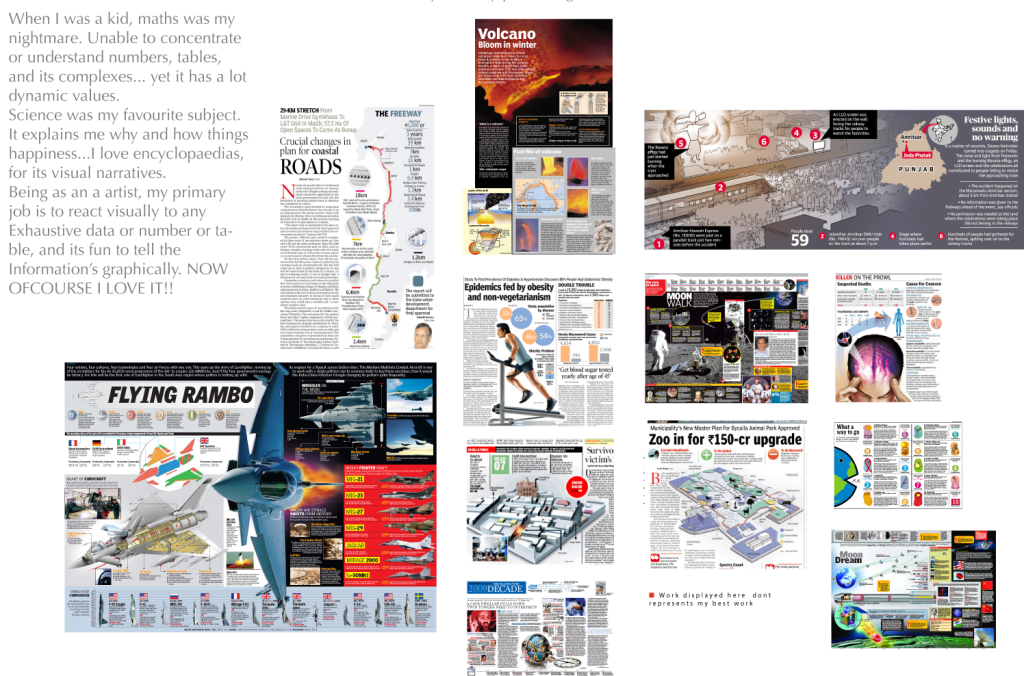
Readers look to newspapers for credibility and clarity. Unlike television or online news, print journalism is held accountable. We can’t “say anything”- once it’s printed, it’s on record. That means we must be careful, thoughtful and precise.
A senior editor at Deccan Herald once told me: “Deepak, not every day is a big news day. Yesterday Israel attacked Iran. Today, it’s quiet.” That’s true. But I always say: even if today isn’t dramatic, we still show up. We still publish with accuracy, urgency, and purpose.
Page One must tell the full story– the 360 degree view- every single day, no matter the news cycle. And we work fast: by 12:30 p.m. we’ve had our first meeting, by 6 p.m. we finalize the lead stories. In that short window, we must analyze, verify and design. There’s no room for gimmicks- just truth, clearly told.
My approach is simple: be authentic. Treat design like visual reporting. We must think beyond “what happened” and ask: what happens next? Our layouts should guide the reader; help them understand what the story means for their lives. And in the fast-moving world of news, we only get a few seconds to engage them.
No sugar-coating, no distractions- just clear, visually engaging storytelling.
This approach was tested and refined at The Times of India, Hindustan Times, The Hindu, Deccan Herald and especially at The New Indian Express (TNIE).
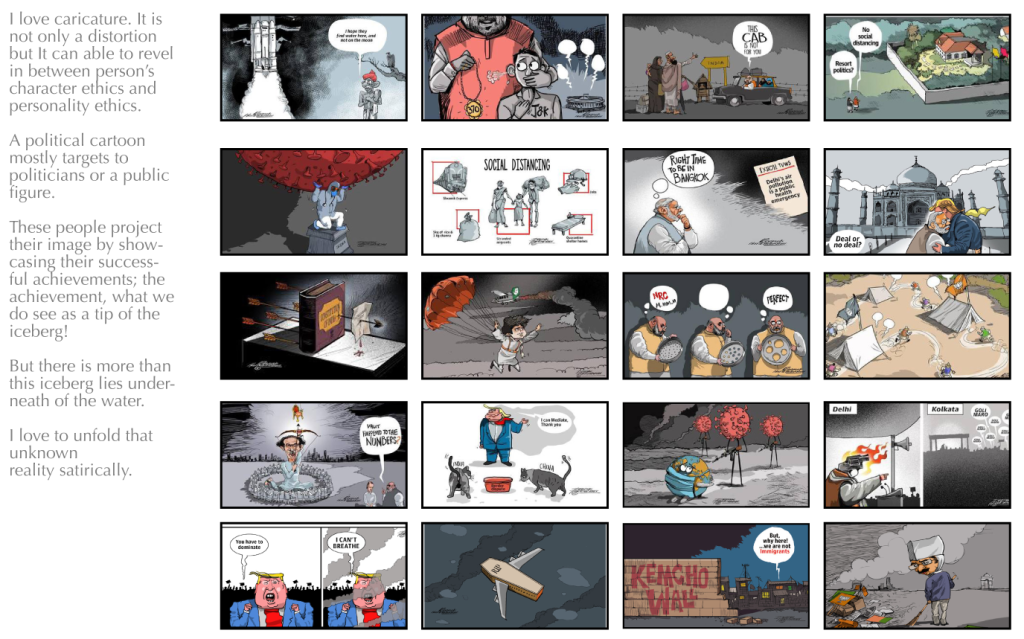
What makes someone leave the country’s biggest newspaper in its most exciting city to start over in unfamiliar territory?
I was doing well at The Times of India (TOI) in Mumbai when Aditya Sinha, my former colleague from Hindustan Times, called me one Sunday evening. I was relaxing with my wife, having a beer outside the city. He had just taken over as Editor-in-Chief at The New Indian Express (TNIE) and said, “Deepak, come. Let’s create something epic.”
People at TOI were surprised: “Why leave Mumbai and a top paper to move to Chennai?” But I believed in the mission. TNIE was in a rebuilding phase after its split from The Indian Express. It had taken over the southern operations under Manoj Santhalia’s leadership, and I was ready for the challenge.
Moving to Chennai- a new city, language and culture – was like entering a different country. But that also gave us freedom. We were no longer following others – we were leading the change.
Stay Tuned for Part 2: Reimagining The New Indian Express…
![]()



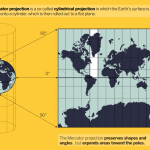
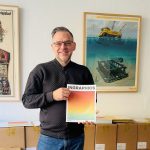
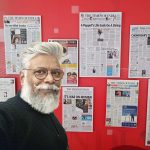
Fantastic interview! I had read the entire interview of Mr. Deepak Harichandan in one stretch well spoken his experience in details how he grew his career as Design Editor met his challenges that demanded him to cater his input to shaping up whether its TOI, HT, The Hindu, DC, or TNIE unequivocally, enjoyed his success he’d deserved for the hardship. No wonder that he’s the best among the rare top newspaper designers internationally. I had been a Sr. Dt Editor Design (retired) of The Hindu till 2017, recollects my wonderful experience with Deepak such a simple person with splendid untiring capacity in his work. I’m eagerly waiting to see the 2nd part of this interview. I wish him many more accolades and die hard strength to win in whatever he touches!